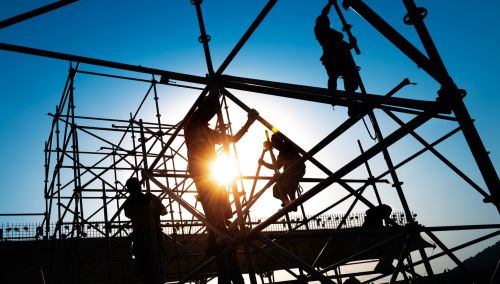Menu
Understanding Third Party Liability in Construction Accidents
May 15th, 2025

If you were hurt on a construction site, you cannot sue your employer under Washington’s Workers’ Compensation laws. However, there may be third parties involved in construction accidents who may be held responsible for your injuries — such as contractors, subcontractors, property owners, and equipment manufacturers. Third-party liability can play a crucial role in ensuring you obtain the maximum compensation you deserve for the damages you suffered.
What is Third-Party Liability?
Third-party liability in construction accidents refers to the legal responsibility of someone other than your employer or co-worker for causing your injuries. However, to be held liable, the third party must have been negligent. This means that their failure to act with reasonable care was one cause of you suffering harm.
In a construction accident, a third-party may incur liability if their actions or inaction created a hazardous condition. For instance, they may have failed to follow proper safety procedures, enforce safety rules, or neglected their maintenance responsibilities. A third party may also be held accountable if they knew, or should have known, about an unsafe condition and failed to timely remedy it or warn others.
What Third Parties May Be Held Liable?
There are many different third parties who are present on construction sites or play a key role in construction projects. For instance, multiple subcontractors may be hired to complete specific tasks. General contractors, engineers, and architects might also be on site to oversee the progress of the project or ensure adherence to safety regulations. In addition, vehicle operators transport materials onto the job site, dig trenches, and prepare the ground for construction.
Third parties who may be held liable in a construction accident can include the following:
- General Contractors — A contractor may be held liable for injuries caused by their failure to maintain a safe working environment, provide adequate safety equipment, or properly train workers.
- Subcontractors — A subcontractor might incur liability for injuries on a construction site in connection with their use of defective materials, failure to follow proper safety procedures, and failure to provide a working environment free from hazards.
- Equipment manufacturers — Equipment manufacturers can be held liable if an accident was caused by a manufacturing defect, inadequate warning, or design flaw.
- Property owners — While contractors and subcontractors are responsible for maintaining a safe working environment, a property owner must ensure their entire premises are safe to carry out the project.
- Vehicle drivers — There can be a number of construction vehicles that may be involved in a construction accident, including cranes, bulldozers, and dump trucks. If a vehicle is overloaded or not operated properly, liability can attach for any injuries that arise as a result.
- Architects and engineers — Architects and engineers may be held liable for a construction accident if their design or engineering work led to structural issues that caused the accident.
The facts and circumstances surrounding every construction accident are unique. It is essential to conduct a thorough investigation to determine which parties should be held responsible for the resulting injuries. This can involve interviewing witnesses, reviewing accident reports, taking photographs of the accident scene, and consulting with accident reconstruction experts.
What Damages Can You Recover if a Third Party is Liable for Your Injuries?
Third-party liability allows an injured construction worker to obtain monetary recovery beyond Workers’ Compensation benefits. While the Washington State Department of Labor and Industries (L&I) may cover your medical expenses and a portion of your lost wages, the damages you suffered are likely much more extensive. L&I does not compensate for pain and suffering. By filing a personal injury action against a third-party responsible for the accident, you may be entitled to recover for the full extent of your economic and non-economic damages including pain and suffering. L&I will have a lien on a portion of your recovery for repayment of benefits it paid if you are successful.
Compensation in a third-party claim for construction accident injuries can include:
- Medical expenses
- Future medical costs
- Lost wages
- Future loss of earnings
- Out-of-pocket costs
- Pain and suffering
- Loss of enjoyment of life
- Physical pain and mental anguish
- Loss of consortium
- Permanent impairment or disfigurement
You only have a limited amount of time to pursue legal action against a negligent party to recover your damages. The statute of limitations in Washington State for personal injury matters is generally three years from the date the accident occurred. Failure to file a lawsuit before the time frame expires can mean you will be forever barred from recovering the compensation to which you’re entitled.
Contact an Experienced Washington Construction Accident Attorney
If you have been injured on a construction site due to a third party’s negligence, carelessness, or recklessness, it is crucial to have an attorney who knows how to secure the compensation you need to move forward. The Bellingham personal injury attorneys at Robinson & Kole provide reliable representation to construction accident victims throughout Washington State and strive to secure the maximum compensation they deserve.
We welcome you to contact us for a free consultation by calling 360-671-8112 or by using our online contact form. Se habla Español.



